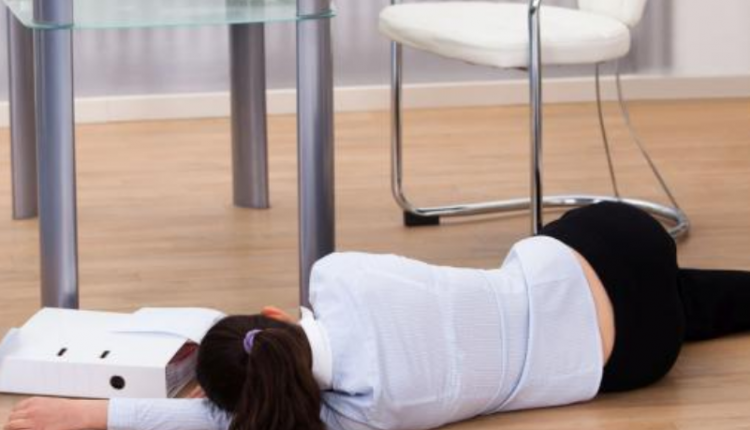
Syncope: symptoms, diagnosis and treatment
Syncope consists of a transient loss of consciousness, often related to conditions of no concern. It is essential to diagnose syncopes of cardiac origin which, if left untreated, can lead to sudden death
The term collapse to define a transient loss of consciousness has fallen into disuse.
The term syncope is now used to define a loss of consciousness:
- Transient;
- With inability to maintain the tone of the muscles that enable us to maintain an upright position (postural tone);
- With spontaneous recovery of consciousness;
- That does not require electrical or pharmacological cardioversion.
If, on the other hand, it is a sensation of impending loss of consciousness, accompanied by blurred vision and generalised weakness, usually of short duration, we may speak of presyncope.
The incidence of syncope in childhood is approximately 126 cases per 100,000
15% of paediatric subjects have at least one episode before the age of 18.
Syncope and presyncope account for 0.4 – 1% of paediatric hospital emergency room admissions and 3 – 4% of hospital cardiology consultations.
Patients who are admitted have an average hospital stay of about 3 days, totalling about 12,000 hospital days per year.
Syncopal episodes have a major clinical impact, with the risk of serious trauma depending on both the activity of the child and the characteristics of the syncope itself.
Diagnostic investigations are very costly since the absence of underlying cardiological, neurological and/or metabolic diseases must necessarily be demonstrated.
Moreover, neither the psycho-social impact, which often manifests itself in marked traits of anxiety on the part of parents and persons with whom the child shares experiences (teachers, relatives, etc.), nor the medico-legal aspect should be underestimated.
As far as causes are concerned, syncope can be of cardiac, neurological (neuromediated) or orthostatic origin, i.e. linked simply to standing.
14% of syncopes are caused by cardiac disease
Cardiac syncope is the most dangerous and can have mechanical (congenital or acquired heart disease) or arrhythmic causes.
Neuromediated syncope accounts for about 70% of syncopes and is characterised by a sudden drop in blood pressure and sometimes in heart rate, leading to a reduction in the blood supply to the brain and subsequent loss of consciousness.
This syncope is usually triggered by situations that provoke a reverse cardiovascular reflex which, instead of leading to an increase in heart rate and blood pressure, leads to the exact opposite.
The situations that most frequently trigger neuromediated syncope are emotions, painful stimuli, standing upright for a long time (prolonged orthostatic posture), hot and crowded environments, fever, dehydration, a hot bath or shower, a coughing fit, urinating, etc.
Neuromediated syncope has a peak incidence between 15 and 19 years of age and occurs particularly in girls
Although the tendency to have syncope is to some extent related to the individual constitution, a predisposed person does not necessarily have to suffer from it all their life.
In general, one recognises periods with a greater number of episodes and long periods in which no symptoms occur.
Often, the most difficult periods are caused by certain deficiencies in the diet and an unhealthy lifestyle.
Syncope is sometimes confused with syncope-like events, which do not lead to loss of consciousness but mimic it.
This happens, for instance, in certain neuropsychiatric events such as migraine, epilepsy, vestibular syndrome, characterised by the sudden onset of severe vertigo, depression, and attacks of hysteria.
Certain metabolic alterations such as electrolyte abnormalities, certain endocrine diseases and hypoglycaemia can also mimic syncope.
In cases of syncope, it is important to collect a detailed history of each event
In pre-school children, it is often the mother who is the most reliable person to gather information about the event.
Once the history has been collected and the child has been examined, an electrocardiogram, cardiological, neuropsychiatric and metabolic investigation is usually required. The main objective is to rule out or diagnose cardiac causes that may also lead to sudden death.
In conclusion, the management of syncope in the paediatric age, although not differing from that in adulthood, must take into account age-related factors, such as the child’s difficulty in explaining symptoms and the parents’ strong anxiety component, which make diagnostic framing and treatment much more difficult.
Read Also
Emergency Live Even More…Live: Download The New Free App Of Your Newspaper For IOS And Android
Head Up Tilt Test, How The Test That Investigates The Causes Of Vagal Syncope Works
Cardiac Syncope: What It Is, How It Is Diagnosed And Who It Affects
New Epilepsy Warning Device Could Save Thousands Of Lives
Understanding Seizures And Epilepsy
First Aid And Epilepsy: How To Recognise A Seizure And Help A Patient
Neurology, Difference Between Epilepsy And Syncope
First Aid And Emergency Interventions: Syncope
Epilepsy Surgery: Routes To Remove Or Isolate Brain Areas Responsible For Seizures



